BMW X5 2023 review: Small changes, big difference for mid-sized SUV
The X6 has been updated, too
It seems the British public has a slightly strained relationship with the BMW X5, a car that is seen by many as one of the ultimate Chelsea tractors. But ever since its introduction in 1999, the X5 has been more than just a luxury wagon on stilts. Refined, great to drive and well made, it became a hit with customers despite its image problems, and that original car began an entire lineage that has spanned almost 25 years to date.
And it’s set to go a little longer yet, with a new model now on sale. It’s a development of its predecessor, using much the same underpinnings but building on the old car’s strengths with more modern styling and some equally modern technology, both under the skin and in the cabin.
The question is whether all these tweaks have cemented the position of the X5 — and indeed that of its coupé-inspired X6 sibling, which has inherited many of the same upgrades — as among the best in the business, or whether rivals from the other major car brands (some relative newcomers) have left the big Bavarian behind.
Exterior design and rivals
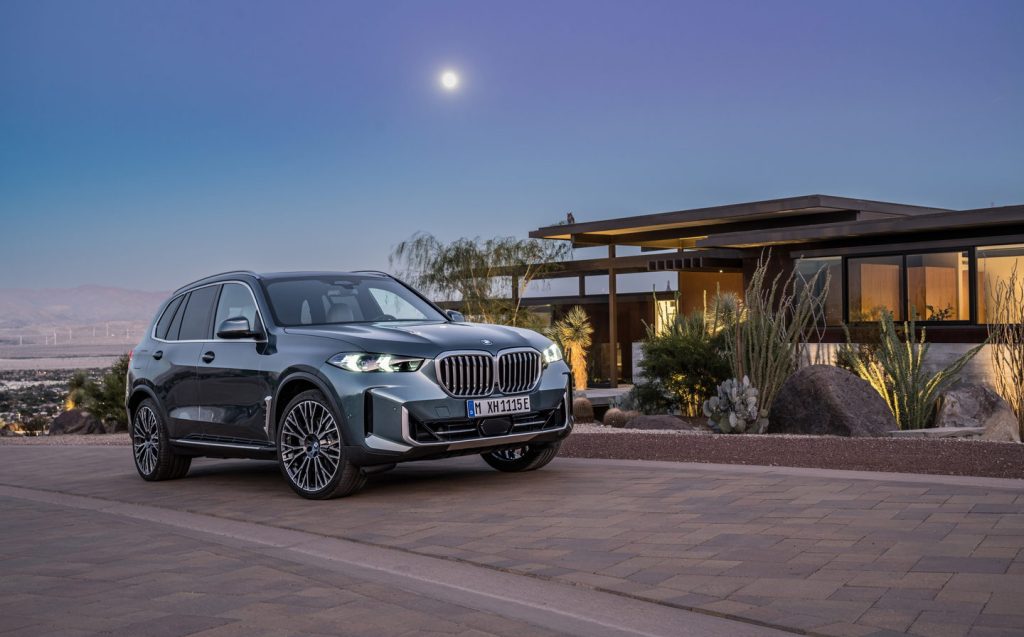
BMW is pretty proud of its changes to the X5’s exterior but the updates are not what you’d call wholesale. Nobody is going to think the new model is anything other than an X5.
Nevertheless, there are noticeable differences, including new bumpers and a tweaked grille, as well as narrower headlights with a kind of chevron light signature. There are new rear lights, too, plus some additional paint colours and updated alloy wheel designs. But that’s about your lot.
At the same time, much the same treatment has been applied to the fastback-styled X6, although for reasons unknown, the X6 retains the same rear lights as its predecessor rather than gaining redesigned versions.
But while the changes may be minor on their own, they add up to be greater than the sum of their parts. The new X5 looks a little cleaner and sleeker than before, if you can use such a word to describe a two-and-a-bit-tonne SUV. It’s certainly more modern, and particularly observant readers will have spotted the subtle improvement.
And the BMW X5 needed such improvements if it was to remain competitive alongside rivals that have moved forward dramatically since the last version was launched. The Range Rover Sport and Porsche Cayenne have both improved noticeably of late, the Mercedes GLE has had a facelift and there’s an updated Audi Q8 on the way soon, too.
Interior and practicality

Inside, BMW has adopted a similar policy of making changes that sound minor, but add up to a big difference.
In short and aside from some tweaks to the dashboard that we’ll come onto later, very little about the interior has changed, with just as much space and luxury as before. The quality of the materials and the way in which they are stitched together remains first-rate, and with such an enormous footprint, it’s no surprise to find the space on offer is enormous.
Basic X5s, for example, offer 650 litres of luggage space, and that’s assuming you leave all five seats upright and only fill the boot to the window line. In fact, the rear is so big that BMW offers the X5 with the option of seven seats, providing occasional seating for two behind the rear bench.
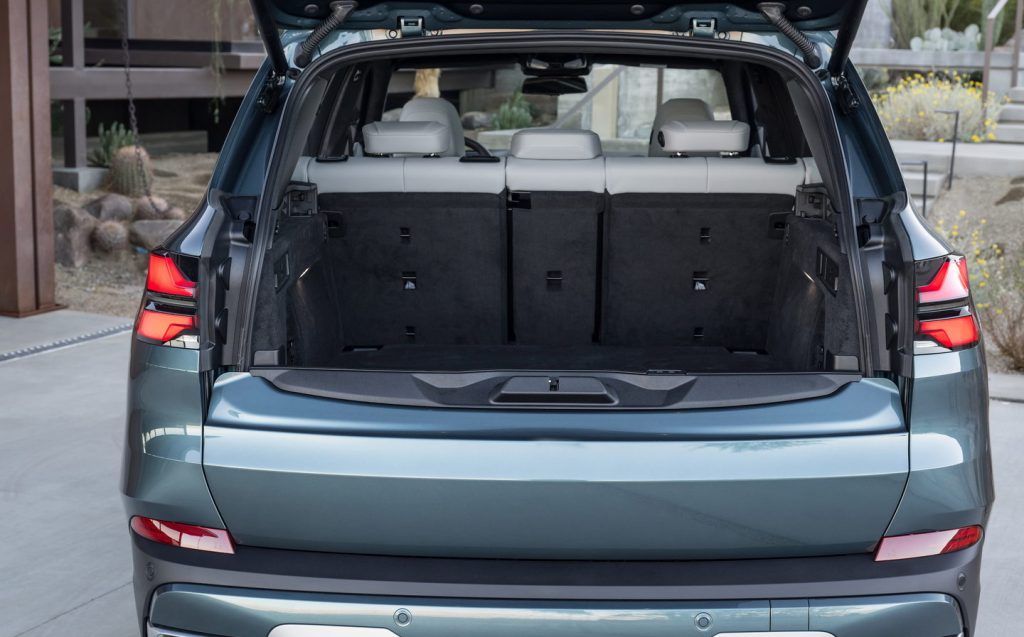
For those choosing the plug-in hybrid X5, though, there is a small space penalty to pay, with just 500 litres of boot space when all five seats are in place. That’s not to be sniffed at — a BMW 3 Series Touring has a similar amount of boot space, and that’s hardly cramped, but the hybrid X5’s boot is noticeably less capacious than that of the basic diesel.

But while hybrid buyers might lose out slightly, those preferring the more rakish lines of the X6 won’t be penalised quite as much. Obviously, there’s no option of seven seats, but 580 litres of luggage space is pretty good going, even if it is a few litres down compared with the Cayenne Coupé.
Technology and safety
While the vital stats remain much the same, BMW has fitted a new infotainment system called the Curved Display. As the name suggests, it’s the same curved two-screen display found in the iX electric SUV and the latest-generation 3 Series saloon, and it uses BMW’s latest operating system, too.
That means the system is sharper, more modern and more configurable than before, with smart displays both in the middle and behind the steering wheel. The digital instrument display is a particular improvement, with a far less cluttered appearance than before, despite having more layouts to choose from.
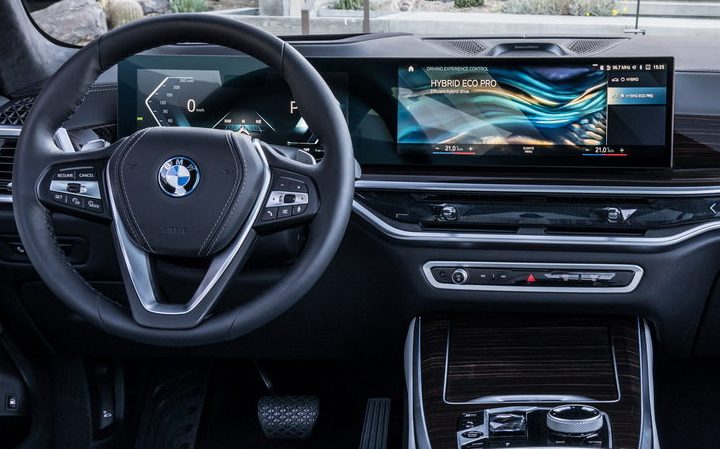
But there’s more to the new screen than that. BMW has also taken the opportunity to clear up the dashboard, removing the climate control switchgear in favour of a touchscreen system. While the BMW system is better than some — the temperature controls are always accessible in a kind of toolbar at the foot of the display, and the menu is only ever a tap away — it’s still quite fiddly when you’re using more complicated functions than just turning the temperature up a bit.
On the other hand, the removal of physical climate switchgear has allowed BMW to clean up the X5’s dashboard, making it feel more modern with fancy ambient lighting that now ‘interacts’ with the car and driver, with special effects when you receive a phone call and other gimmicks.

Fortunately, though, despite BMW’s spring clean, the iDrive rotary controller has escaped the cull, allowing drivers familiar with the infotainment system to navigate more or less by touch, rather than having to stare at the touchscreen every time they want to do anything.
It doesn’t sound all that useful, but when you’re trying to drive and change a setting at the same time it’s a godsend.
Performance, power output and plug-in electric range
As before, the X5 and X6 both get a range of engines, with some big diesels joined by some similarly large (and some even larger) petrol motors.

For both cars, things kick off with the 3-litre, six-cylinder diesel engine, powering the xDrive30d models. As the name suggests, it comes with BMW’s xDrive all-wheel-drive system as standard, and you get a smooth eight-speed automatic gearbox, as well as a plentiful 294bhp. The engine is tried and tested across the BMW line-up, offering plenty of grunt and remarkable smoothness, as well as sensible economy and performance, with a 0-62mph time of around six seconds.
Buyers can choose more powerful options — both the X5 and X6 also come in 4.4-litre V8 M60i xDrive forms, and there are X5 and X6 M Competition models with 616bhp — but the highlight is the new xDrive50e plug-in hybrid, which is available solely in X5 form and replaces the old xDrive45e.
As with the 45e, the 50e gets a 3-litre, twin-turbocharged straight-six petrol engine and an electric motor, plus a big battery to operate as a plug-in hybrid. But the battery is much larger than before, with a capacity of 25.7kWh, and the motor is more powerful, churning out the equivalent of 194bhp.
That means you can go further and faster on electrical power alone, with BMW quoting an official range of around 60 miles before the petrol engine is required. The idea is that most owners will now be able to use electrical power for the majority of their journeys, assuming they charge the car regularly.
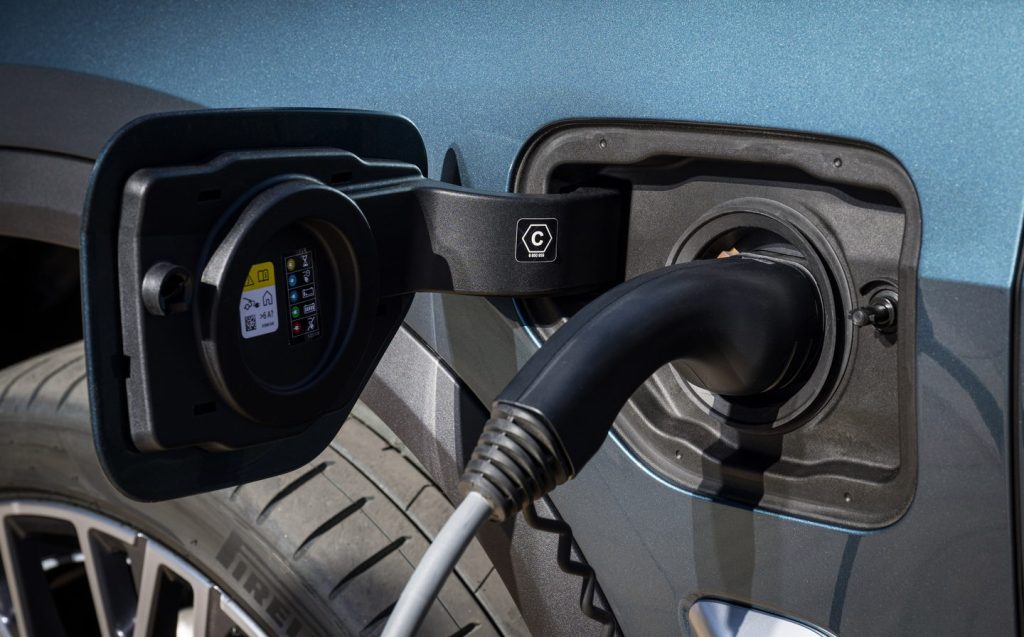
Do that, and you might get somewhere near the absurd three-figure official economy figures, but you will need a very specific lifestyle. Arguably the sort of lifestyle that would be better suited to the iX electric SUV for much of the time. However, for many customers, the real appeal of the xDrive50e is not so much the fuel economy but the low emissions, which ensure a very low rate of company car tax.
But to dismiss this car as a tax dodge would be a little unfair. The combination of petrol engine and electric motor produces a meaty 483bhp — around 40bhp less than you get from the M60i model — and performance is accordingly impressive. Getting from standstill to 62mph takes a mere 4.8 seconds and the top speed is limited to 155mph. This is a quick car in anyone’s book.
And that six-cylinder engine sounds sporty in an appropriately luxurious way. Pop it into a sportier setting and it’ll snort and bark and crackle at all the right moments, but if you just want to relax at a cruise, it’s smooth, quiet and refined. It’s a sensational engine.
Ride and handling
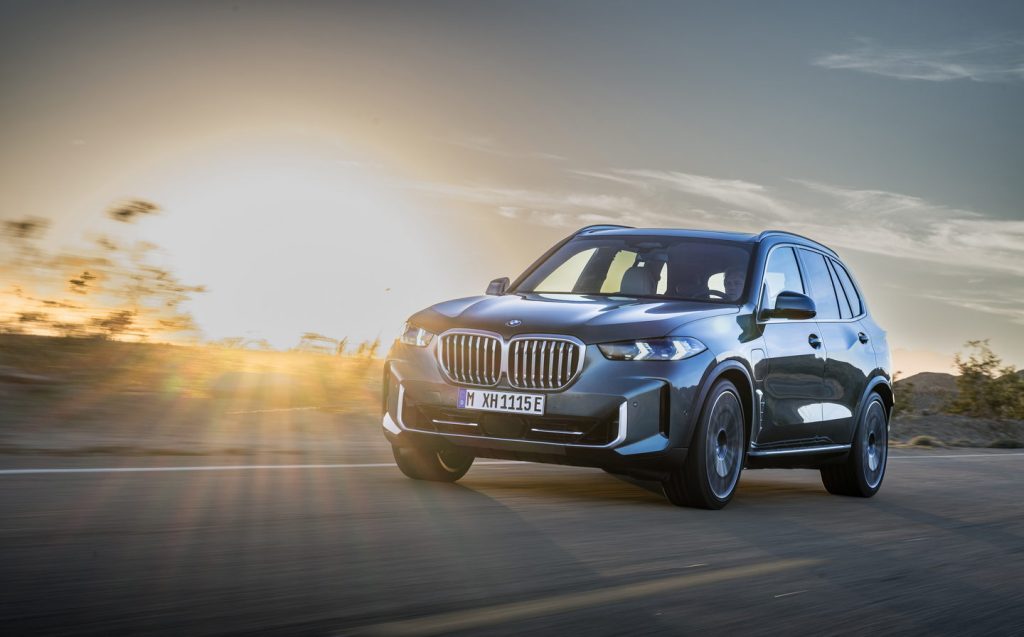
BMW has long professed to be a purveyor of the ultimate driving machines, and while that isn’t quite true of the X5 and X6 — because the Porsche Cayenne is just too good on the road — the BMWs are still brilliant all-rounders.
Most importantly, both cars are very comfortable, and the X5 xDrive50e we tested is especially cosseting thanks to the air suspension that’s fitted as standard. Even the more conventionally sprung models soak up the bumps pretty well, though — the air suspension just makes it even smoother.
Admittedly, even that can’t prevent a little bit of firmness around town, where the weight of the hybrid system seems to drag the X5 down into the sharper imperfections in the surface, but at motorway speeds it simply glides along.
Yet despite that comfort, it handles remarkably well. Of course, there’s no hiding the size of the beast, and it always feels like a big car, but the suspension exerts great control over that bulky body and there isn’t too much pitch or roll when you start flinging it around.
Combine that with immense grip, well-judged steering and brakes that manage to balance the demands of battery-boosting regenerative braking and conventional stopping power, and you’ve got an SUV that’s more enjoyable than it has any right to be. And the X6, with a slightly lower centre of gravity, is marginally better still.

The X5 doesn’t just give a good account of itself on the road, either. There’s a modicum of off-road capability, too, and it’ll prove pretty capable when it comes to towing. Although we’d rather have the big diesel than the hybrid if we planned on carting horses or caravans around.
Pricing and on-sale date
BMW is already offering the new-look X5 to UK customers, with prices starting at just over £68,000 for the cheapest version. But while it might be the basic model, the X5 xDrive30d xLine will do everything most buyers would ever ask of a car. That 3-litre diesel engine is a peach, and it comes with all the fixtures and fittings customers demand of a premium SUV. Leather, climate control, camera systems, safety kit… It has it all.
If you want the xDrive50e, or indeed any other powertrain, you’ll have to move up to the M Sport models, which are expected to be the top sellers. With a slightly sportier look and some more performance-orientated interior features, they give the X5 and X6 a bit of a sportier edge.

But they’re nothing compared with the V8-powered M60i models, which are essentially a halfway house between the conventional X5 and X6 variants and the rip-roaring M Competition cars.
Those high-performance models come with all manner of performance upgrades and a correspondingly ambitious price tag of almost £130,000.
Verdict: BMW X5 review
The new BMW X5 offers buyers more of the same, but there’s nothing wrong with that. The big SUV has evolved in mostly the right direction, making it feel more modern and more high-tech, if perhaps slightly less satisfying ergonomically.
Still, the improvements to the plug-in hybrid powertrain are most welcome, and company car drivers will be delighted with the results. Private customers will probably prefer the cheaper xDrive30d diesel, which is all the car anyone really needs.
Either way, the X5 (and, for that matter the X6) remains one of the very best premium all-rounders in its class, and it seems certain to continue its predecessor’s success.
Related articles
- If you liked our review of the 2023 BMW X5, you might like to read our review of the BMW M3 Touring
- Or, check out the best luxury cars to buy
- Have you seen the new Volvo EX90 SUV?
Latest articles
- testing schedule 2
- test schedule
- F1 driver Lando Norris commissions bespoke open-top Land Rover Defender
- Citroën C3 and e-C3 2024 review: Petrol or electric, bow down before the new king of value cars
- Best-selling cars 2024: The UK’s most popular models
- Fourth-generation BMW 1 Series shows its new face with all-petrol line-up for the UK
- Cupra Tavascan 2024 review: Funky electric SUV continues Spanish brand’s EV roll
- Divine intervention? Trump-supporters’ motorhome destroyed after rolling into telegraph pole
- Extended test: 2023 Vauxhall Astra Sports Tourer GS PHEV




































